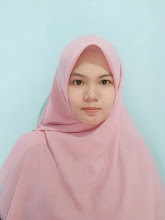Do you find that your students have the differences in their language development? How does the language develop from one child to other children? These questions refers to both nature and nurture factors to influence young learners’ language development. Nature means that language is a natural biological process whereas nurture is that language instead is a process that depends on the stimulation offered by the environment.
In nature factors, commonly children shows a remarkable natural ability to learn a language. For instance, all children will exhibit the following language behaviors during the first two years of life:
According to Bloom (1998), children quickly grow to learn how to produce complete sentences between 2 and 3 years of age and into the elementary school years. Young learner also develop the ability to produce sentences of increasing complexity to effectively communicate with others and also slowly develop meta-linguistic awareness, the knowledge of language that allows children to think about their language (Berko Gleason, 2005). For example, during elementary school, children will start becoming aware of when sentences are grammatically correct or not (Bowey, 1986).
In nature factor, the environment plays important roles in language development of young learner. For example, mothers who teach letters to their babies, talk out loud to them, and read books to them regularly and consistently are much more likely to have children with well-developed vocabularies. When parents are consumed by financial or emotional pressures, their children will be less to understand the vocabularies. The teacher also gives a big influence to young learners’ language because the students will copy and be stimulated by using the teacher’s language.
Therefore if your students are differences in producing the language, you have to try to provide the activities that cover all diversity. It takes time I think to plan the lesson, however, the students will together smile and have a fun in your class.
References
Berko Gleason, J. (2005). The development of language (6th ed.). Boston: Allyn & Bacon.
Bloom, B. (1998). Language acquisition in its developmental context. In W. Damon (Ed.), Handbook of child psychology (pp. 309–370) (5th ed., Vol. 2). New York: Wiley
Bornstein, M. H., Cote, L. R., Maital, S., Painter, K., Sung-Yun, P., Pascual, L., Pecheux, M. G., Ruel, J., Venuti, P., & Vyt, A. (2004). Cross-linguistic analysis of vocabulary in young children: Spanish, Dutch, French, Hebrew, Italian, Korean, and American English. Child Development, 75, 1115–1140
Bowey, J. (1986). Syntactic awareness and verbal performance from preschool to fifth grade. Journal of Psycholinguistic Research, 15, 285–308.
See also previous post
The Role of Teacher Talk for Young Learner in The Classroom
In nature factors, commonly children shows a remarkable natural ability to learn a language. For instance, all children will exhibit the following language behaviors during the first two years of life:
- Babbling at about 3 to 6 months of age;
- Uttering the first words and using single words at about 10 to 13 months of age—especially those that refer to animals, body parts, and toys (Bornstein et al., 2004);
- Combining nouns with verbs to produce two-word speech at approximately 18 to 24 months of age.
According to Bloom (1998), children quickly grow to learn how to produce complete sentences between 2 and 3 years of age and into the elementary school years. Young learner also develop the ability to produce sentences of increasing complexity to effectively communicate with others and also slowly develop meta-linguistic awareness, the knowledge of language that allows children to think about their language (Berko Gleason, 2005). For example, during elementary school, children will start becoming aware of when sentences are grammatically correct or not (Bowey, 1986).
In nature factor, the environment plays important roles in language development of young learner. For example, mothers who teach letters to their babies, talk out loud to them, and read books to them regularly and consistently are much more likely to have children with well-developed vocabularies. When parents are consumed by financial or emotional pressures, their children will be less to understand the vocabularies. The teacher also gives a big influence to young learners’ language because the students will copy and be stimulated by using the teacher’s language.
Therefore if your students are differences in producing the language, you have to try to provide the activities that cover all diversity. It takes time I think to plan the lesson, however, the students will together smile and have a fun in your class.
References
Berko Gleason, J. (2005). The development of language (6th ed.). Boston: Allyn & Bacon.
Bloom, B. (1998). Language acquisition in its developmental context. In W. Damon (Ed.), Handbook of child psychology (pp. 309–370) (5th ed., Vol. 2). New York: Wiley
Bornstein, M. H., Cote, L. R., Maital, S., Painter, K., Sung-Yun, P., Pascual, L., Pecheux, M. G., Ruel, J., Venuti, P., & Vyt, A. (2004). Cross-linguistic analysis of vocabulary in young children: Spanish, Dutch, French, Hebrew, Italian, Korean, and American English. Child Development, 75, 1115–1140
Bowey, J. (1986). Syntactic awareness and verbal performance from preschool to fifth grade. Journal of Psycholinguistic Research, 15, 285–308.
The Role of Teacher Talk for Young Learner in The Classroom









